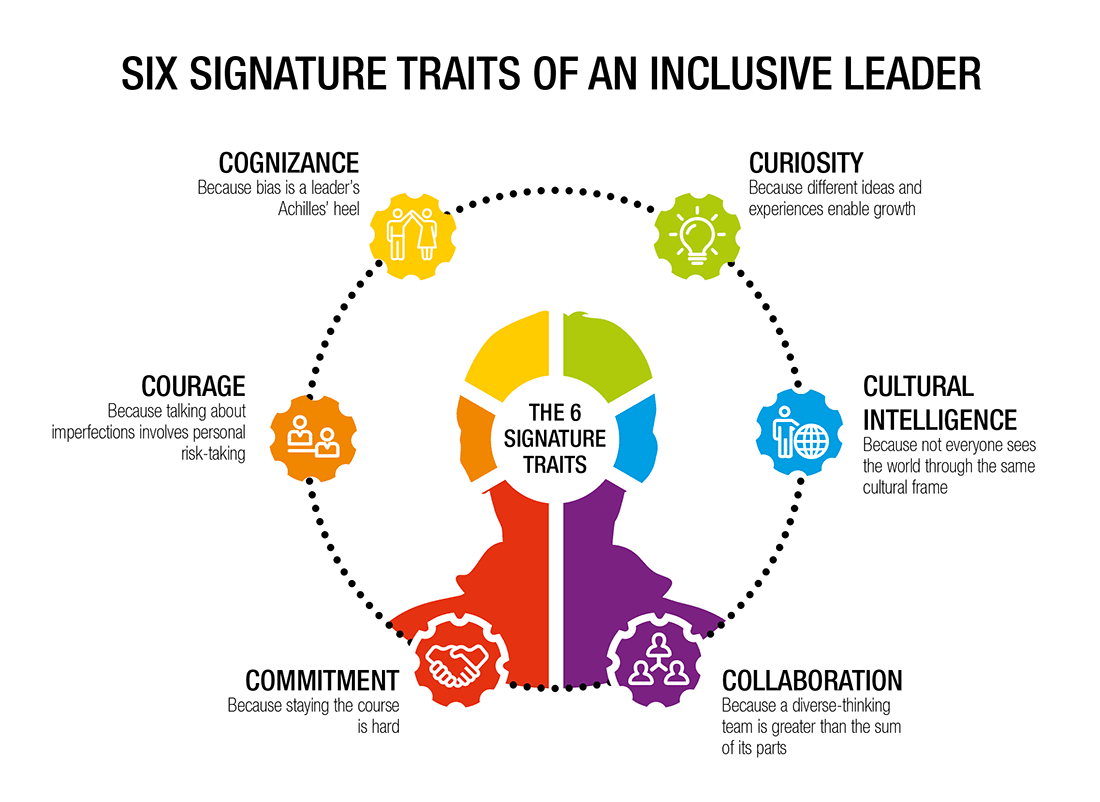Inclusive leadership and professional identity literature review
Effects of the relationship between inclusive leadership and professional identity on high performance work systems and employees
Introduction
The aim of this research study is to investigate the moderating effects of the relationship between inclusive leadership and professional identity on high performance work systems and employees’ ability, motivation and opportunity enhancing practices and a range of attitudinal and behavioral outcomes. Employee retention of key talent is critical for fostering competitiveness and profitability of any specific organization (Appelbaum et al., 2015). It has been noted that negative attitude at work is likely to enhance employees’ intention to quit behaviors (Cennamo & Gardner, 2008). Based on the above, it is critical that an organization develops conditions for improving employees’ high levels of commitment, satisfaction and organizational citizenship behaviors, which can reduce their intentions to quit and increase retention of key talent (Wong et al., 2008).
Human resources are considered as core resource of an organization and their effective management is crucial for assuring that all the other resources of an organization are used for extending the benefits of the whole organization (Twenge & Campbell, 2008). Organizations are striving to create a workplace that can encourage effective performance level of employees. Human Resource (HR) practices are given special attention in this regard which combine to establish High Performance Work System (HPWS) (Karatepe & Olugbade, 2016). When high performance HR practices are well connected and aligned with organizational goals, then organizations are likely to excel within specific sector. For instance, as provided by Avey, Wernsing & Luthans (2008) high performance workplaces are likely to provide better skills to employees, enhance motivation of employees and provide them opportunities to succeed and excel. The underlying study has also chosen to study this linkage in the context of health care sector.

The studies that have focused on investigation of employee outcomes have maintained that organizations do not perform in isolation, but the contribution and performance of employees make it possible for organizations to attain their performance goals (Topcic, Baum & Kabst, 2016). Likewise, the combined contribution of employees is regarded as collective human capital of a specific organization, which then enables the organization to attain competitive advantage (Oberidat, Mitchell & Bray, 2016). Regardless of this importance of human resources, the issues in the healthcare sector highlights concerns, such as workplace stress, demotivated and dissatisfied employees (Wald et al., 2015). The adverse attitudes and behavioral outcomes have been linked to work design such as poor shift working schedules and work intensification routine, causing job burnout among such employees and thus lead to poor performance. In order to deal with such issues, substantial investment by leaders and managers is needed to motivate and engender employees’ positive behaviors (Nishii, Lepak & Schneider, 2008). Wong, Gardiner, Lang and Coulon (2008) noted that motivation is the main determinant for fostering the performance of healthcare staff and motivated workforce can deliver better healthcare services in an effective way. The motivation of workers is largely based upon the leader’s style and a range of motivation-enhancing HRM practices (Oberidat, Mitchell & Bray, 2016). Thus, the key role in this aspect is played by leadership style and leaders’ behavior, which are considered as preconditions for improving employees’ related outcomes in an organization (Woods, 2004). For instance, characteristics of democratic leader are considered as highly complied with positive employee behavior and attitudes within an organization (Twenge & Campbell, 2008). Based on these evidences, the underlying research plan has chosen to focus on investigating the association of leadership style with employee’ behavioral and attitudinal loyalty (Wald et al., 2015).
The Ability, Motivation and Opportunity (AMO) model has been chosen as theoretical perspective for explaining the underlying linkage of leader’s style with employee related outcomes (Karatepe & Olugbade, 2016). AMO makes up important human resource practices that are combined to form High Performance Work System (HPWS). The AMO framework highlights that performance of employees mainly depends on three domains; the ability of employees to perform a specific action, motivation of employees to perform and the support that is provided to employees within working environment of organization (Wald et al., 2015). It can be argued that ability, motivation and opportunity collectively contribute to foster employee performance within a specific organization. Although, the literature has investigated the pathways of ability, motivation and opportunity to witness its contribution in enhancement of employee performance, yet there is limited evidence on investigation of these pathways on collective basis (Iqbal, Anwar & Haider, 2015). Additionally, ability and motivation pathways are commonly addressed aspects of HR practices, which leaves opportunity as less addressed pathway of AMO. For instance, it has been highlighted by Marin-Garcia & Martinez Tomas (2016) that opportunity to perform is mainly viewed in terms of empowerment of employees and it is offered minimal attention by researchers while studying the linkage of HR practices with employees’ behaviors and attitudes. Therefore, this gap will be addressed in the underlying study.
Finally, it has been noted that professional identity mediates the association of leader’s style with attitudinal and behavioral loyalty of employees and thus present of professional identity might change the outcomes related to employee behavior and attitude (Marañón & Pera, 2015). Professional identity is defined as perception of a specific individual about one’s profession, which is formed through attitudes, beliefs and experiences of individual about particular profession. In the context of health care sector, professional identity enables the health care workers to develop connection with their profession and mainly the professional identity is regarded as self-constructed (Kehoe & Wright, 2013). The health care professionals are given respect within society, as savior of humanity. This aspect enables them to develop strong professional identity, which is then reflected in their behavior (Healey, 2009). The professionally identified social workers are most likely to possess positive attitudes as well as behavior, which is then linked with their motivation and satisfaction (Iqbal, Anwar & Haider, 2015). These evidences provide the ground for the notion that presence of professional identity is likely to moderate the linkage of AMO with behavioral and attitudinal outcomes of employees (Wald et al., 2015). For instance, when employees get limited ability, motivation and opportunity, but they have strong professional identity, then it is expected that professional identity will most likely moderate the association and will lead to positive behavior and attitudes of employees. Same is expected in case of association of leadership style with attitudes and behavior of employees. In this regard, it can be maintained that professional identity plays vital role in encouraging positive attitudes and behavior of workforce in healthcare setting and thus along with style of leader, this variable is also considered in present study. The previous studies have offered minimal consideration to study the moderating effect of democratic leadership style and professional identity. This can be considered as important avenue of research, and thus this gap is addressed in the present study.
Another important aspect in relation to understanding of attitudinal and behavioral loyalty outcomes of employees is culture. Culture is the set of beliefs and norms being held by a society, which defines the actions of individuals within that society (Giorgi, Lockwood & Glynn, 2015). The culture of organization defines the way in which activities are performed within the specific organization and it creates identities of organization. The role of culture is evident in aligning the interests of individuals with the goals of organization and thus it acts as behavioral mechanism for individuals (Kangas et al., 2018). The role of culture is thus crucial in shaping the behavioral and attitudinal outcomes of individuals and it has been considered as moderating variable in this study.
Elevate your brand’s potential for loyalty with Assignmentstudio. Our tailored solutions and research-driven strategies empower businesses to nurture meaningful connections, fostering Brand Loyalty that drives sustained growth and success.
Health Care Sector of Saudi Arabia
The health care sector of Saudi Arabia is considered to be in transformational phase as the population of country is increasing and there is huge demand to provide high quality health care services to the patients. It is witnessed that huge reliance is sustained on foreign health care providers and focus is maintained on retaining the skillful workers for assuring better delivery of care (Al-Hanawi et al., 2018). In Saudi Arabia, there are on average 11 health care professionals for serving 1000 patients. This average is half the expected average rate that is 22 for every 1000 patients (Al-Hanawi, Khan & Al-Borie, 2019). These figures are showing that there is huge burden on health care professionals of Saudi Arabia and management needs to crucial steps for enhancing the motivation of health care staff. It is further found that only 1 out of 3 health care professionals of Saudi Arabia are actual citizens of the country (Al-Hanawi, Khan & Al-Borie, 2019). It is indicating that most of health care professionals in Saudi Arabia are overseas employees.
Illuminate the path to effective leadership with Assignmentstudio. Our meticulously researched essays on Leadership offer a comprehensive exploration of key strategies and traits essential for success in leadership roles.

Hire Expert Writers at
Affordable Price
WhatsApp
Get Assignment Help
Research Aim and Objectives
The main aim of this research is to investigate the association of HPWS with AMO pathways and to address the linkage of AMO with attitudes and behavior of health care staff, along with analysis of the moderation of democratic leadership style and professional identity. The study is purported to achieve following key objectives;
- To investigate the impact of high performance work system on AMO (Ability, Motivation, and Opportunity).
- To investigate the impact of AMO on attitudinal loyalty of employees.
- To investigate the impact of AMO on behavioral loyalty of employees.
- To study the effect of democratic leadership style on the relationship between AMO and employee attitudinal loyalty and employee behavioral loyalty.
- To study the impact of professional identity on the relationship between AMO and employee attitudinal loyalty and behavioral loyalty of employees.
- To study the impact of organizational culture as moderating variable on the relationship between AMO and employee attitudinal loyalty and behavioral loyalty of employees.



